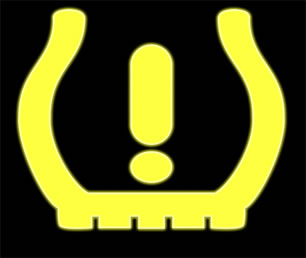Your car’s tire pressure monitoring system (TPMS) is a vital component that helps ensure your safety on the road. Since it is an essential safety feature, your vehicle is equipped with a TPMS light that lets you know if there is a potential problem. When the tire light comes on, it could be a warning that something needs your immediate attention. Below we will look at what you should know about the TPMS light, as well as steps you can take when you see that light on your dash.

What Does the TPMS Light Mean?
The tire pressure monitoring system (TPMS) light is designed to indicate when one or more of your tires is significantly under-inflated. This is important because overinflation can lead to poor vehicle handling, decreased fuel efficiency, and increased risk of a tire blowout.
In some cases, the illumination of the TPMS light signifies a problem with the system itself, rather than tire pressure.
When see the TPMS light, do the following:
Check Tire Pressure
Use a tire pressure gauge to check the pressure of all your tires, including the spare if you have one. Compare the readings to the recommended tire pressure listed in your vehicle’s owner’s manual or the sticker on the driver’s side door jamb.
Inflate Tires to the Correct Pressure
If any tires are under-inflated, inflate them to the recommended pressure. Most gas stations have air pumps, or you can use a portable air compressor. Make sure not to overinflate, as this can also cause problems, such as uneven tire wear.
Inspect Tires for Damage
While checking the pressure, inspect each tire for visible damage such as cuts, punctures, or embedded objects like nails. If you find any damage, have it inspected by a professional as soon as possible. Sometimes a repair can be done, depending on the location of the damage and other factors.
Keep Up on Regular Maintenance
Regularly check your tire pressure, at least once a month and before long trips, to ensure they are at the correct levels. This can prevent the TPMS light from coming on and help you avoid unexpected issues. Additionally, regular tire rotations, alignments, and inspections will extend the life of your tires and improve your vehicle’s overall performance.
Call in the Pros
If the TPMS light remains on after you’ve checked and inflated your tires, or if it comes on frequently, there may be an issue with the TPMS itself. In this case, it’s wise to have a professional mechanic inspect the system. They can diagnose and fix any problems, ensuring your TPMS light is functioning correctly.
